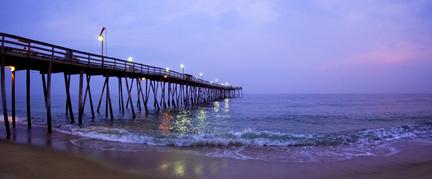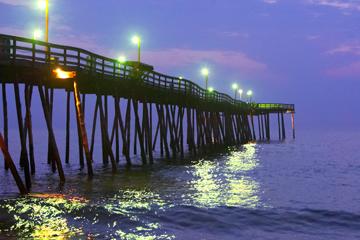That said, here we go...
DSLR vs. Point and Shoot
DSLR stands for digital single lens reflex. I'm going to assume you all know what digital means. Single lens reflex means that when you look through the viewfinder, you are actually looking through the lens, via a system of mirrors. Allowing you to look directly through the lens means you can see the effect of changing the lens. When you push the shutter button, the mirror flips up and out of the way, which is why the viewfinder goes black if you're looking through it when you push the button.
In a point and shoot camera, the viewfinder actually “sees” through a separate lens than the one that takes the picture, so what you see through the viewfinder may not actually line up exactly what you get in the picture. Which can be frustrating if you've carefully framed something (i.e. Lined it up carefully in your shot) Point and shoots don't typically (though some do) have interchangeable lenses. And many of them have the infuriating delay between when you push the button and when it actually takes the picture.
Focal length
In an attempt to figure out how to say what i wanted to say here, i looked up focal length on wikipedia. it had math in it. it made me want to curl up in the fetal position and cry, but for your sake i persevered. lets just say that focal length describes the "angle of view" or how much of whats in front of you is in the picture. its also used to describe the lens itself sometimes. as in, "where the hell did i put my 50mm?!"
there are fixed focal length lenses, such as a 50mm or 300mm lens; and zoom lenses, which means you can move it through a range of focal lengths, such as a 24-70mm or 70-200mm lens. the shorter the focal length, the wider the angle of view. the longer the focal length, the more magnified and closer things seem.
18mm: (notice how the waterline seems to arc)
70mm(ish... i don't have the exact settings documented)
one of the piers in the Outer Banks
Types of lenses
I've already mentioned fixed focal length and zoom lenses. But there are a few other descriptors of lenses that you may hear mentioned so we'll just define them (very basically) here.
- Macro (also called Micro by some companies): A macro or micro lens has a longer barrel that allows for you to focus the camera more closely to the subject than you could with a normal lens of the same focal length. A macro lens can be pretty much any focal length. It allows you to magnify your image as compared to what it would be with a non-macro lens of equivalent focal length.
in addition to being a type of lens, and a genre of photography, this is also a setting on a lot of point and shoot cameras. It is usually indicated by a little tulip icon. [Sidenote: There have probably been times when you have been trying to take a picture of something with the lens of the camera very close to the object and your camera wouldn't focus... probably made you want the throw the camera, no? Well, try changing your camera to macro mode... it may help]
- Telephoto: these are lenses with long focal lengths that let you get pictures of things that are far(ther) away. like a telescope.
- Wide-angle: these are lenses with very short focal lengths that allow for a very wide view. The wider the angle, the more distorted the image gets, like the curve of the waterline above.
- Fish-eye: this is a wide angle lens that distorts the image so that it appears to bulge very obviously, circularly.
Continue to Part 2: Exposure


1 comment:
Aleady learned several things. I have the tulip!! Perhaps that will help my hulk-like rage when the camera refuses to focus.
And, now, I must get on an airplane with three toddlers. Fun. See you there!
Post a Comment